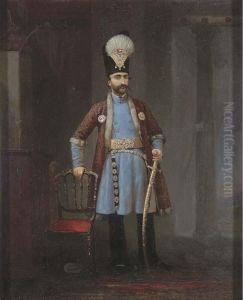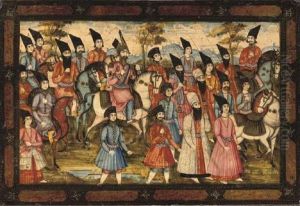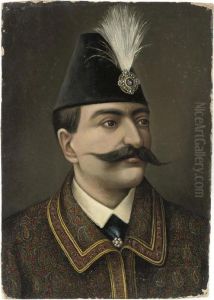Nasir Al-Din Shah Paintings
Nasir al-Din Shah Qajar was not an artist in the conventional sense but rather a significant historical figure in Iran's Qajar dynasty, ruling as Shah from 1848 until his assassination in 1896. Born on July 16, 1831, in Tabriz, Iran, he ascended to the throne at the age of 17 after the assassination of his father, Mohammad Shah Qajar. His reign, lasting nearly half a century, is one of the longest in Iranian history and was marked by attempts at reform and modernization, influenced by his fascination with the West.
Nasir al-Din Shah's contributions to Persian art and culture, while not those of a traditional artist, were significant. He was a patron of the arts, significantly impacting the visual culture of his time. Under his reign, Persian miniature painting saw a revival, and he was instrumental in the establishment of Dar ul-Funun, the first modern university in Iran, which became a center for the arts and sciences. Moreover, he was keenly interested in photography, a relatively new invention at the time, and is credited with establishing the first official photography studio in Iran.
Despite his interests in the arts and modernization, Nasir al-Din Shah's reign was also characterized by political and social conservatism, and his later years were marked by increased internal dissent and the rise of constitutional movements. His assassination on May 1, 1896, by Mirza Reza Kermani, a follower of the Babi religion, ended his long reign. While Nasir al-Din Shah's direct contributions to the arts might not be the focus, his role in shaping the cultural and artistic landscape of Iran during a period of significant transition is undeniable. His legacy in Iranian art and history is complex, reflecting both his efforts to bring Iran closer to the West and the internal challenges he faced in a rapidly changing world.


